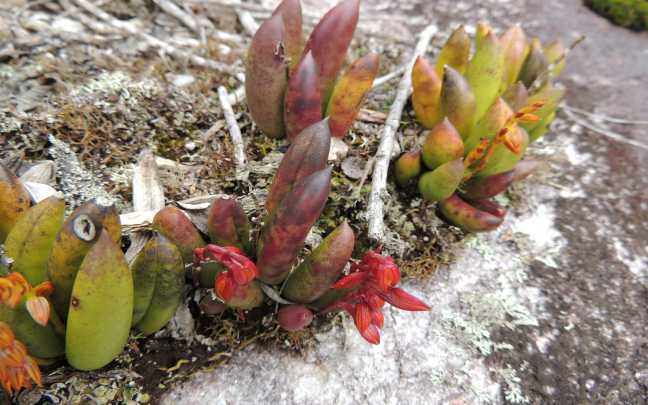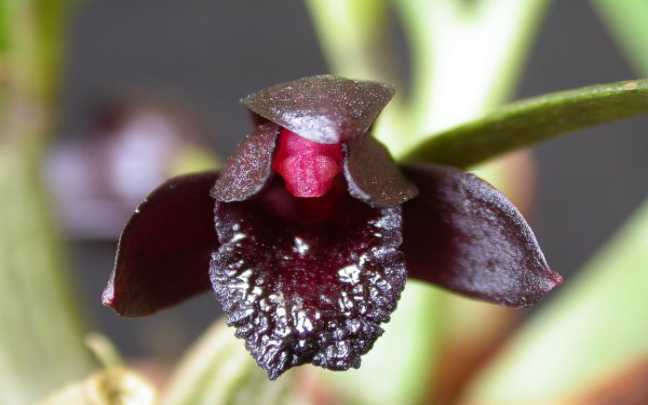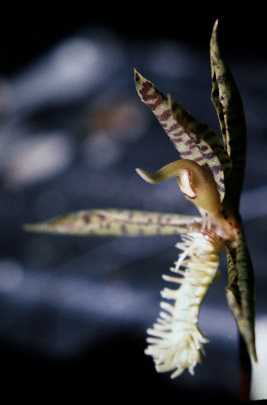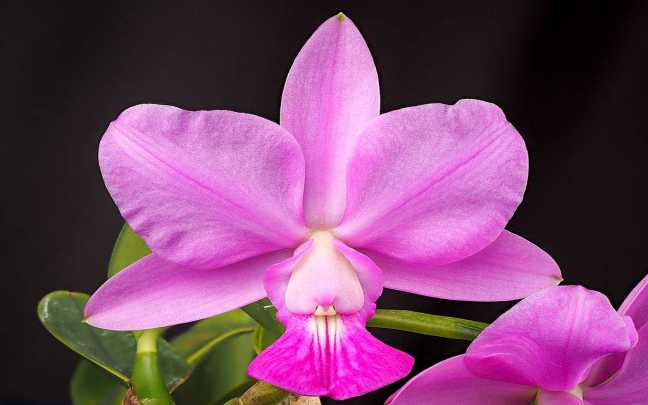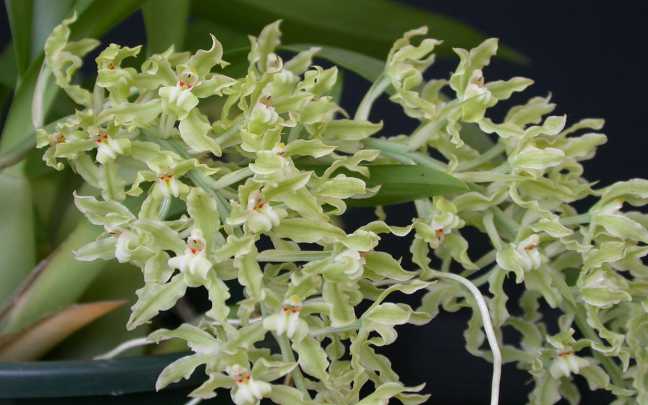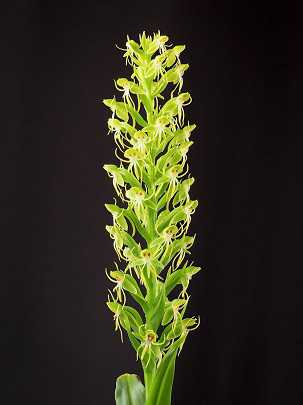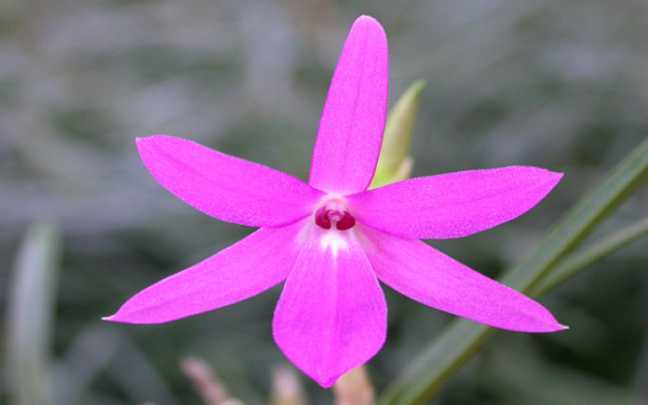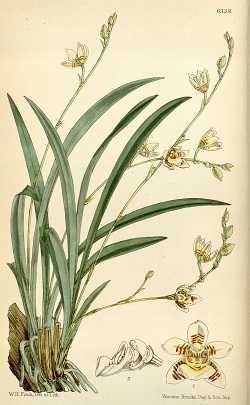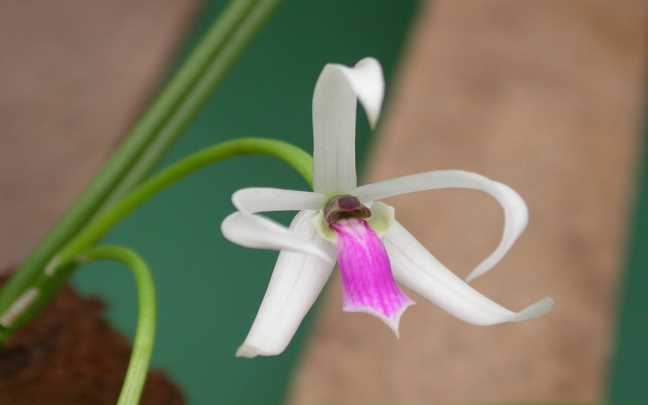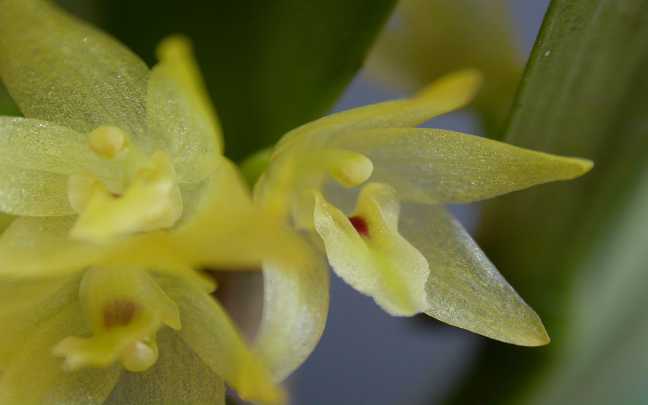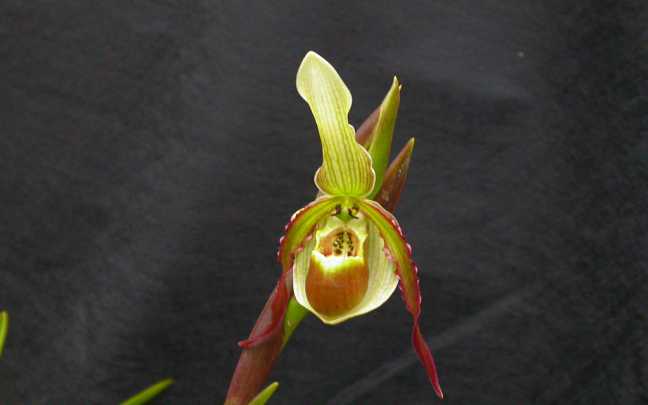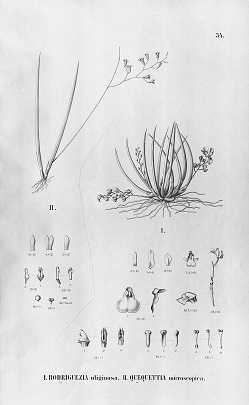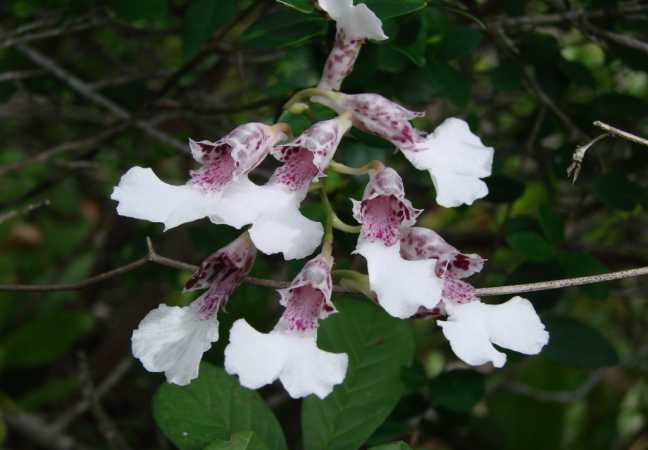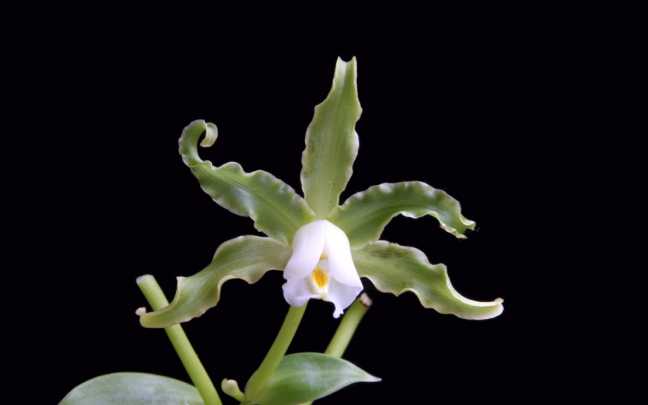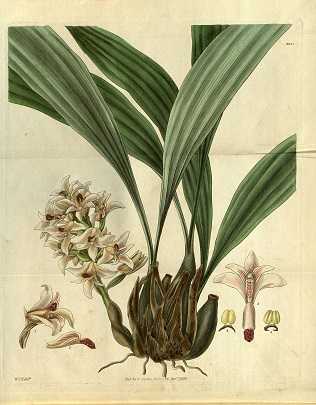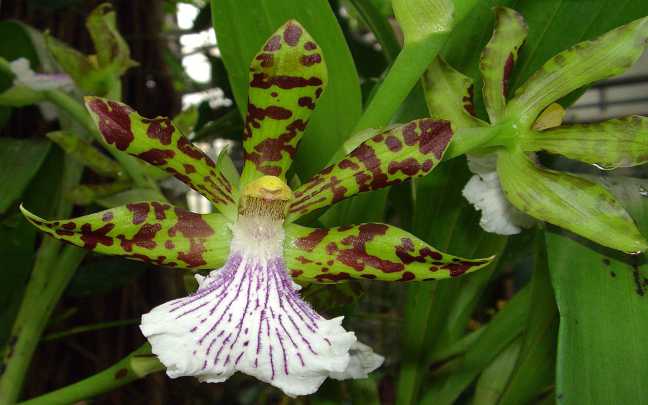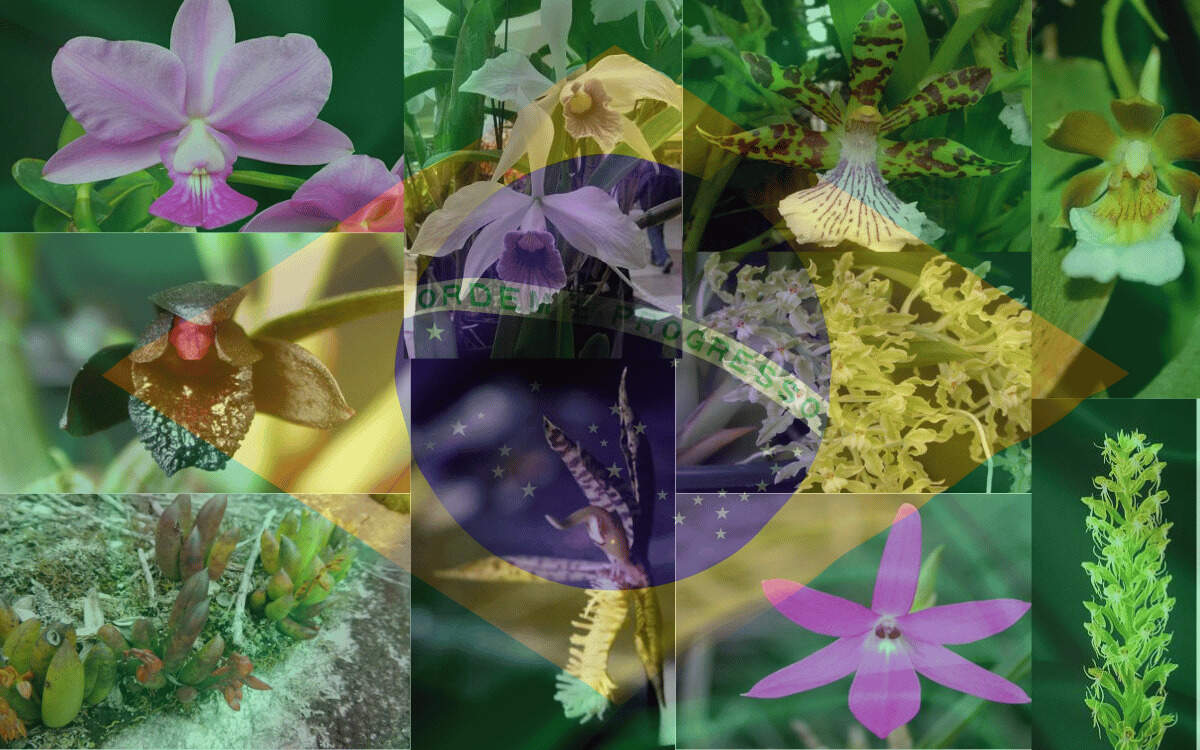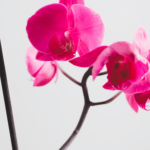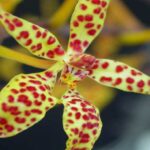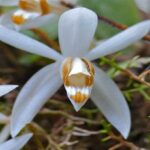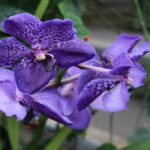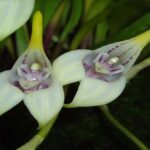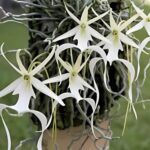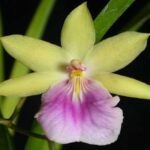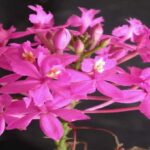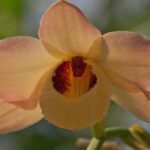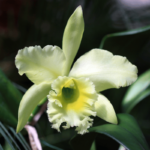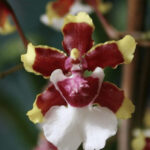Currently, there are more than 2000 cataloged Brazilian orchid species, distributed across over 170 genera. These orchids are found throughout Brazil, with a significant concentration in the Amazon rainforest, where most of the species are located.
Orchids comprise over 35000 species and 1800 genera, with the majority of these plants present in the Asian continent.
In the Americas, there are also some very interesting species, with some among the rarest orchids in the world.
In Brazil, there are also many interesting orchids worth mentioning, so keep reading to discover 22 native Brazilian orchid species that you probably don’t know.
Learn How to Achieve Super Blooms on Your Orchids
🛑 If you love orchids and you're tired of not being able to make them bloom...
Then, know that thousands of beginner growers are achieving beautiful flowers on their orchids by following this method.
Click the button below to have beautiful orchids with show-worthy flowers every year. ⤵
1 – Acianthera teres
The first orchid on our list is Acianthera teres, native to the states of Minas Gerais and São Paulo.
It is an orchid that can primarily be rupicolous and sometimes terrestrial.
Its leaves are oval-shaped and dotted.
During its blooming period, it can produce between 3 and 10 flowers, most of which are wine-colored.
This orchid is easily cultivated in drier areas, such as northeastern Brazil or northern Minas Gerais.
2 – Brasiliorchis schunkeana
Brasiliorchis schunkeana is part of an interesting genus where all orchids are native to Brazil.
This genus is distributed in the southern and southeastern regions of Brazil.
Regarding this orchid, it is popularly known as the black orchid, because its flowers are dark brown / intense purplish-red.
These colors are very similar to black, hence the nickname.
It is native to the Atlantic Forest in the state of Espírito Santo, being an orchid that lives on trees, that is, epiphytic.
As for its name, it is in honor of Mr. Vital Schunk, an orchid enthusiast born in the capital of Espírito Santo.
Its flower is about 1 centimeter (0,39 inch) and lasts for 15 to 20 days on average.
To learn more about this orchid, visit this article.
3 – Catasetum barbatum
The third Brazilian orchid on this list is Catasetum barbatum.
It is an orchid with sympodial growth, meaning it grows sideways.
It can also be classified as terrestrial or in some cases epiphytic, and its maximum height is 70 centimeters (27,55 inch).
Catasetum barbatum is native to the states of
- Amazonas
- Pará
- Minas Gerais
- Distrito Federal
- Mato Grosso
- Goiás
Learn more about Catasetum orchids.
4 – Cattleya walkeriana
You probably already know this one.
The Cattleya walkeriana is one of the most famous orchids in Brazil and worldwide.
It was discovered in 1839 by George Gardner, a British physician and botanist who was in Brazil collecting plants.
He found Cattleya walkeriana on the banks of a tributary of the São Francisco River in the state of Minas Gerais.
The name walkeriana was given to honor his assistant Edward Walker, who accompanied George for two years.
This is an orchid that attracts many orchid enthusiasts due to its scent, which is very similar to cinnamon.
Additionally, its flowers come in a variety of colors, such as:
- Lilac
- White
- Blue
Usually, this orchid blooms between April and June.
5 – Cattleya purpurata
Again, a very famous orchid that you probably already know.
As mentioned in the article about laelia orchids, Cattleya purpurata used to belong to the genus Laelia.
But due to recent research on its genes, it was reclassified as Cattleya.
This is an epiphytic orchid, found in the southern and southeastern regions of our country.
Its flowering mainly occurs during the summer, and its flowers are usually white or purplish.
A curiosity about this orchid is that it was chosen as the state flower of Santa Catarina.
6 – Gomesa crispa
Gomesa crispa is a Brazilian micro orchid.
A micro orchid is one that has very small flowers, usually less than 1cm (0,39 inch).
It is typically found in the southeast of Brazil, in humid and shaded areas of the Atlantic Forest.
Gomesa crispa can be considered easy to cultivate, but it requires good light and high humidity to develop.
It is an epiphytic orchid, so its roots like to be exposed.
Learn more: https://www.aos.org/orchids/orchids-a-to-z/letter-g/gomesa.aspx
7 – Habenaria repens
Also known as swamp orchid, floating orchid, or water orchid, Habenaria repens is a native orchid of Brazil.
Its “surname” repens comes from Latin, meaning crawling, which gives us a clue about how this plant lives.
One of the main characteristics of this orchid is that it is an aquatic orchid, probably the only one in the world.
Many orchid enthusiasts consider this orchid as terrestrial.
But as it likes to be in places where there is stagnant water, many people consider this orchid as aquatic or semiaquatic.
To learn more about this species, visit:
Do You Want to Learn How To Keep Your Orchids Healthy And Ready to Bloom Every Year?
So, I prepared a complete guide, step by step and illustrated, that will show you:
• The secrets to getting beautiful flowers every year
• How to fight and identify pests and diseases on your orchids
• THE MAGIC SUBSTANCE for orchids and how to use it
• And much, much more.
The great news is that the manual is now available at a super discount!!
But beware, it's only for the first buyers.
Click on MORE INFORMATION below and discover the secrets to show-worthy flowers. 👇
8 – Isabelia violacea
Isabelia violacea was found and described in 1840 by Lindley.
At that time, it was classified as Sophronitis violacea, but in 1925, it was transferred to Sophronitella, and only in 2001 was it transferred to the genus Isabelia.
This orchid mainly appears in the following locations:
- Southern Bahia
- Rio Grande do Sul
- Goiás
It blooms in winter, and its flowering usually produces three flowers.
Learn more about this species.
9 – Koellensteinia graminea
Koellensteinia graminea is an epiphytic orchid native to the states of Bahia, Amazonas, and Pará. Its flowering usually occurs in the summer. During its flowering, it presents us with several flowers, each approximately 2 centimeters in diameter (0,78 inch), but they do not all open at once.
In terms of cultivation, it prefers a warmer climate, well-draining soil, ample watering, and plenty of light.
10 – Leptotes bicolor
Leptotes bicolor got its name because its flowers have two colors.
It is an orchid that appears not only in the south and southeast of Brazil but also in northern Argentina.
It inhabits forests located at altitudes between 600 and 1100 meters (1968,5 to 3609 feet), in the Atlantic Forest of the Southeast and South regions of Brazil, and northern Argentina.
Its flowers are quite large compared to the size of the plant, reaching up to 4 cm (1,57 inch), supported by floral stalks slightly larger than them.
In one flowering, it typically produces 1 to 5 flowers that emit a slight fragrance. Flowering occurs in early spring and lasts about 15 days.
11 – Miltonia spectabilis
This orchid was named for the beauty of its flowers, as “spectabilis” in Latin means spectacular.
Usually, this orchid appears in the Atlantic Forest in the following states:
- Espírito Santo
- São Paulo
- Rio de Janeiro
Its natural habitat consists of moist and well-lit locations. During flowering, it typically produces a flower, varying in size between 8 and 10 cm in diameter.
These flowers are lightly scented.
It is mainly cultivated on tree trunks and plastic pots.
As for the soil, sphagnum moss, charcoal, and pine bark are recommended.
12 – Notylia longispicata
This Brazilian orchid is quite unknown; few people on the internet talk about it.
It was discovered in 1926 by Hoehne & Schltr.
Notylia longispicata is mainly found in the states of Minas Gerais and São Paulo and is an epiphytic orchid.
13 – Octomeria crassifolia
Octomeria crassifolia was described in 1927 by Lindley.
It is an epiphytic orchid found in much of Brazil and also in other countries such as Uruguay.
Some states where it is present include:
- Bahia
- Rio Grande do Sul
- Mato Grosso Do Sul
- Goiás
During its flowering, it can generate up to 15 very small flowers, each about 1 cm (0,39 inch) in diameter, and they last for about 10 days.
Flowering typically occurs in late autumn and early winter.
14 – Phragmipedium vittatum
Phragmipedium vittatum is a plant with terrestrial habits that mainly appears in the southeast and also in the central-west regions of Brazil.
The places where it lives are usually dry during the day and very cool at night, with a big temperature difference between morning and night.
It blooms in spring, producing flowers from 4 to 10 centimeters (1,57 to 3,93 inch) in diameter.
15 – Quekettia microscopica
Quekettia microscopica is one of the 3 species in the quekettia genus.
These species are very similar, so don’t be surprised if you can’t differentiate them.
The name of this genus was a tribute to the English botanist and historian Edwin John Quekett.
Quekettia microscopica is mainly found in northern Brazil but is also common in other countries such as French Guiana, Suriname, Guyana, and Venezuela.
16 – Rodriguezia decora
Rodriguezia decora is an orchid that can be considered small, reaching a maximum of 30 centimeters (11,81 inch) in height.
Its flowers typically measure between 1 and 2 centimeters in diameter and last an average of 10 days.
Flowering occurs in late autumn and early winter, and it does not produce many flowers.
17 – Sarcoglottis grandiflora
Sarcoglottis grandiflora is a Brazilian orchid from the sarcoglottis genus, created in 1827.
An interesting fact is that the creator of this genus, Karl Borzowoj Presl, also created 2 other genera of mainly Brazilian orchids, namely:
- Elleanthus
- Cyclopogon
Sarcoglottis grandiflora appears in 14 states in Brazil, covering all regions of the country.
The states where this orchid is found are:
North (Amazonas, Rondônia)
Northeast (Alagoas, Bahia, Ceará, Paraíba, Pernambuco, Rio Grande do Norte)
Central-West (Mato Grosso)
Southeast (Espírito Santo, Minas Gerais, Rio de Janeiro)
South (Paraná, Santa Catarina)
18 – Trichocentrum fuscum
Trichocentrum fuscum is native to the southeast region but also appears in the southern Bahia and in some parts of the Amazon.
It thrives in cool and humid places, being found in deep, humid grottoes or forests where it is “hidden” from direct sunlight.
It blooms between November and January, producing up to 3 flowers, each averaging 3 centimeters in diameter.
This is an epiphytic orchid that does not have pseudobulbs and can be considered small.
19 – Vanilla edwalli
Vanilla edwalli belongs to one of the most famous genera among orchids, vanilla, having orchids popularly known as chocolate orchids.
Some curiosities:
- This genus is famous because some of its species are used in vanilla production.
- This species can also be used for this purpose.
- It was discovered in 1941 by the botanist Frederico Carlos Hoehne, a miner who made significant contributions to orchid studies in Brazil.
- The name is a tribute to the Swedish orchid collector Gustav Edwall.
It is present in the central-west of Brazil and northern Argentina, considered an epiphytic plant and in some cases terrestrial.
Learn more about this species.
20 – Warczewiczella amazonica
Warczewiczella amazonica is a native orchid of the Amazon basin and also other countries in South America, including Suriname.
It is an epiphytic orchid that produces only one flower during its blooming, but this flower is very large, about 25 centimeters (9,84 inch) in diameter.
Its flowering occurs in late winter or early spring.
21 – Xylobium squalens
Xylobium squalens belongs to the xylobium genus, created in 1825 by the botanist John Lindley.
John Lindley was an English botanist who made significant contributions to the advancement of botany, publishing several books and also helping establish the Gardener’s Chronicle magazine.
Curiosity: Xylobium comes from Greek and means life in wood. This is because the first orchids of this genus were found attached to trees.
As for xylobium squalens, it was described in 1798 (before the current genus was created).
So at that time, it was described as Maxillaria variegata, changing to xylobium only in 1961.
Variegatum also comes from Greek and means varied.
This name was given due to the great variety of colors of the flowers of this species.
It produces between 6 and 12 flowers during its blooming, each measuring between 1 and 2 centimeters (0,39 to 0,78 inch) in diameter.
Since they are very close to each other, these flowers form a kind of ball.
22 – Zygopetalum crinitum
Now let’s move on to the last of our Brazilian orchids, zygopetalum crinitum.
This orchid is native to the Serra Do Mar in Santa Catarina, Brazil.
However, it is also found in several other states, such as Espírito Santo.
- It can be classified as epiphytic and grows laterally.
- Usually blooms between March and April.
- Produces relatively large flowers, ranging from 7 to 9 centimeters (2,75 to 3,54 inch).
Moreover, they have a strong and very pleasant fragrance.
Its flowers last an average of 30 days.
To cultivate them, the ideal conditions are as follows:
- Temperatures between 5 and 35 °C / 41 and 95°F (it likes cool nights and higher humidity)
- 50% shading
Conclusion – Brazilian Orchids
There are still thousands of Brazilian orchid species that are very interesting to cultivate.
However, those covered in this article are some of the most interesting ones.
If you want to learn more about orchids, you can access our complete guide on how to care for orchids.
If you enjoyed this article, please share it on your social media, as this will allow more people to get to know these orchids.
Click on the icons below and share this article.

